New products at Crocus
by Sarah - September 4th, 2009.Filed under: Crocus, New Products.
New items at Crocus

dunk-mug £15.99
Ever thought how handy it would be if you could keep your drink and your biscuits together? Well this is our new ceramic 'dunk mug'.Perfect for your hot drink, but with an added compartment on the underside to keep your dunking material. Perfect as a present, or just as a bit of fun.
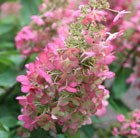
hydrangea £12.99
Position: full sun or partial shadeSoil: moist, well-drained, moderately fertile, humus-rich soilRate of growth: fast-growing Flowering period: June to August Flower colour: white and pinkHardiness: fully hardyGarden care:To enhance flowering prune hard in early spring, cutting back the previous season's shoots to within a few buds of the permanent, woody framework of the plant.
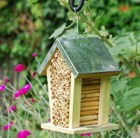
bee-nesting-box-with-zinc-roof £9.99
Encouraging native bees into the garden with a nesting box should help you get bumper crops of fruit and vegetables. This novel nesting box has a galvanized metal pitched roof and is packed with pieces of bamboo that provide the ideal nesting site. The 'solitary' bee species that use these nests won't swarm and don't sting.Size: 12x12x20cm high
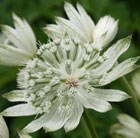
masterwort £6.99
Position: full sun or partial shadeSoil: fertile, moist, preferably humus-rich soilRate of growth: average to fast-growingFlowering period: June to AugustFlowers: whiteOther features: the flowers are excellent for cutting and dryingHardiness: fully hardyA white Astrantia, with green tipped petals, that form the same distinctive pincushions, but on a slightly grander scale. These are particularly well suited to prairie style planting schemes, as their flowers add a different form and texture to the ornamental grasses. Alternatively create large, sweeping clumps throughout herbaceous borders where you can enjoy their long lasting summer flowers throughout summer.Astrantias have been cultivated in Britain since the 16th century and have numerous common names, such as melancholy gentleman, Hattie's pincushion and the more well known masterwort.Garden care: Incorporate plenty of organic matter when planting and water well in dry weather especially newly established plants. Lift and divide large clumps in early spring and apply a generous 5-7 cm mulch of well-rotted manure or garden compost around the plant. Divided specimens may take some time to establish since they don't like having their roots disturbed.
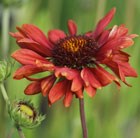
blanket flower £5.99
Position: full sunSoil: fertile, well-drained soilRate of growth: averageFlowering period: June to SeptemberFlower colour: deep wine redOther features: excellent and long-lasting cut flowersHardiness: fully hardyFlowering through the summer months and into autumn with regular deadheading, this is a vigorous seed raised variety of the North American blanket flower adding vibrant pools of colour in an herbaceous border or gravel garden. Good drainage and full sun keep this prairie and grassland plant compact and floriferous.Garden care: Cut down flowering stems in the autumn and mulch with straw or bracken to prevent the crowns getting wet. Large clumps can be divided carefully and replanted in late spring when the soil has warmed up. Autumn collected seed can be sown in spring for planting large areas.
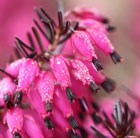
winter heath £3.99
Position: full sun or partial shadeSoil: well-drained acid soil. Will tolerate mildly alkaline soil.Rate of growth: averageFlowering period: January to MayHardiness: fully hardyMasses of small, urn-shaped, deep pink flowers, maturing to magenta then crimson smother the plant from January to May and contrast beautifully with the fine, dark green foliage. Low and spreading in habit, it's useful groundcover for sunny, well-drained areas of the garden and looks at home planted in bold drifts with other heathers. Though it prefers acid soil, the plant will tolerate mildly alkaline soil and partial shade.Garden care: During the growing season water regularly, applying a half-strength application of a balanced liquid fertiliser every four weeks. After the plant has flowered trim with shears or secateurs to remove the dead flowers and encourage bushy growth.






